Jack Yeats and Lucian Freud do not make for an obvious pairing. They exhibited together only once, as part of a group show in London in 1948. By then Yeats was well into his seventies and Freud still only in his twenties. The younger artist was a frequent visitor to Dublin in the late 1940s and early 1950s, where he would see the elderly Yeats wandering around town, but there is no evidence that they ever actually met. What they lacked in terms of personal acquaintance is not balanced out by many obvious affinities of subject or style. They were figurative painters. They liked horses. They both, at a certain point in their careers, shifted from an emphasis on the drawn line towards a notably liberal handling of paint. That, on the surface at least, is about it.
The curators of ‘Life above Everything: Lucian Freud and Jack B. Yeats’ at the Irish Museum of Modern Art have pulled off a surprising feat, then, in bringing these two artists’ work together to such powerful effect. They have uncovered some previously unknown points of contact: the exhibition features a set of oil paintings by Yeats that Freud helped a friend acquire, and a wonderful Yeats drawing, The Dancing Stevedores (c. 1900), which hung by Freud’s bed for over 20 years. More notable, though, is the admirable restraint with which these two decidedly individual painters have been placed side by side, rather than been clunkily forced together. In doing so, the exhibition teases out the artists’ parallel yet distinct aesthetic journeys – illuminating how they respectively got at life, as the title has it. An alternative might have been ‘paint above everything’, as the exhibition tracks how both artists plunged headlong, in discrete and enthralling ways, into their very medium of expression.
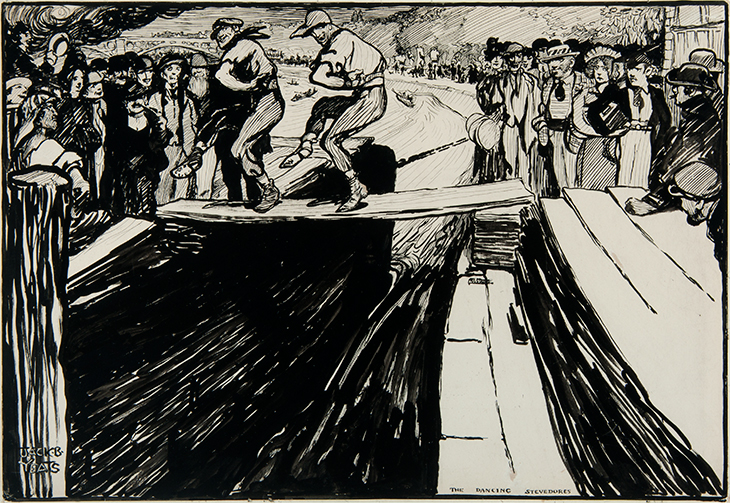
The Dancing Stevedores (c. 1900), Jack B. Yeats. Leeds Museums and Galleries; © Estate of Jack B. Yeats, DACS London/IVARO Dublin, 2019
The greatest revelation is perhaps to be found in the final room. This contains early work by the artists, showing how drawing underpins both their work. Yeats started out as a commercial illustrator and continued to produce cartoons into the 1940s. The people he captures with his distinctive, strong and fluid sense of line – including in the drawing Freud owned – are untameable, vivid characters. By contrast Freud’s Boat, Connemara (1951) renders its western Irish scene with a forensic precision, its only sign of life a tiny horse tethered in the background. The apparent similarity between the two men’s starting points as artists is already a question of profound difference, then; influence or sympathy need not mean confluence.
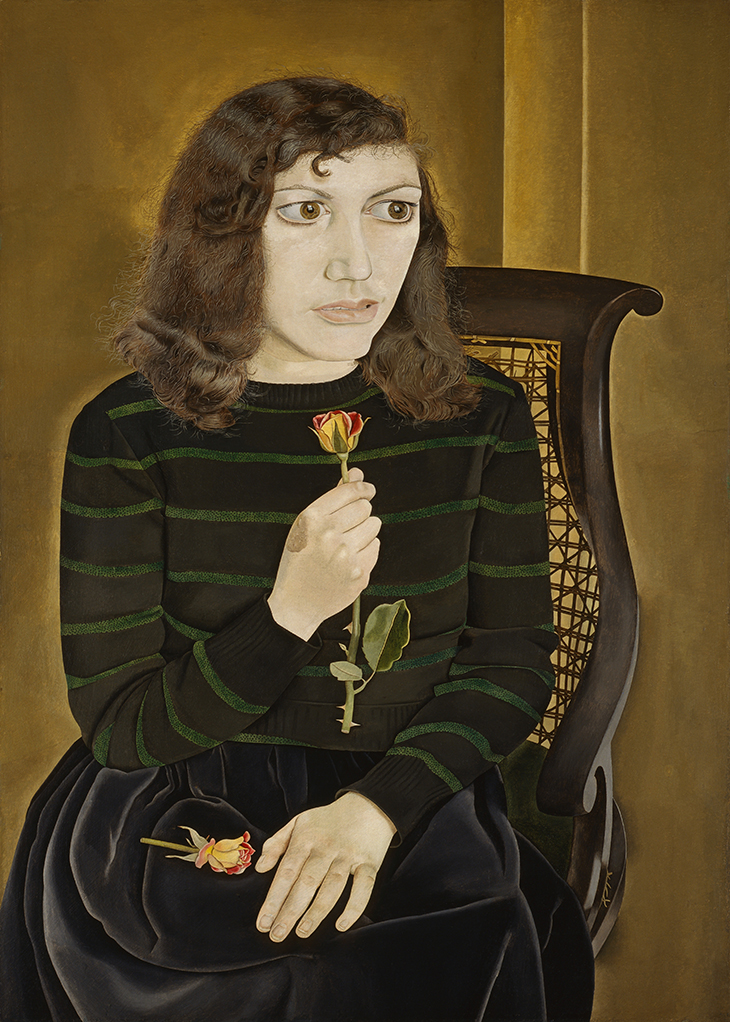
Girl with Roses (1947–48), Lucian Freud. British Council, London; © The Lucian Freud Archive/Bridgeman Images
The uncompromising precision of Freud’s early drawings is carried over into the oil portraits that made his name. The very hairs on the head of Girl with Roses (1947–48), a portrait of Freud’s first wife Kitty Garman, are individually recorded. Yet such verisimilitude is in tension with Garman’s facial features and figure. The closer the artist looks and the more he controls the paint itself, the less present the sitter seems to be. The pensively gripped flower functions as a taunting anti-symbol, a remnant of spiritual hope for a realm beyond fabric, flesh and paint. More subtly, the care with which Girl with Beret (1951–52) registers shadows on the face and neck contrasts with the flatness of much of the rest of the painting; this has the curious effect of rendering the sitter somewhat absent within a formidably finished painted surface.
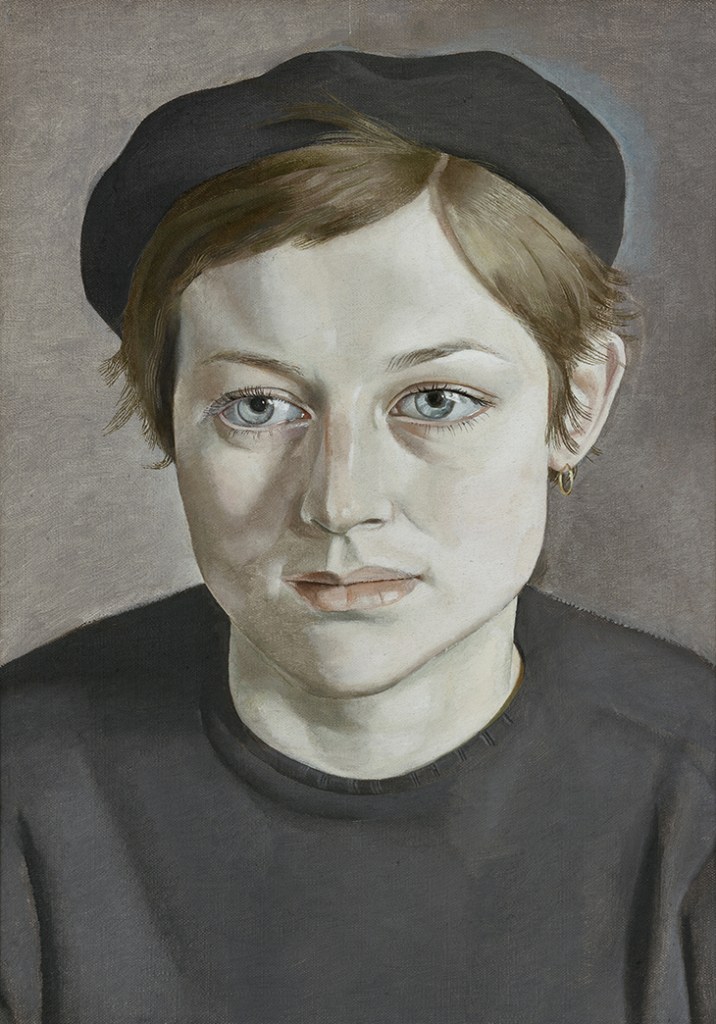
Girl with Beret (1951), Lucian Freud. Manchester Art Gallery; © The Lucian Freud Archive/Bridgeman Images
Yeats’s early painterly realism is altogether different in kind. His is an exterior world. Whether set in the west of Ireland, or engaging with urban Dublin or London, he evokes the spirit of a place and its people. The face of the driver looking back over his shoulder in A Lift on the Long Car (1914) is barely to be discerned. But his gaze fleetingly imprints something as it travels on through a disconcertingly liquid scene. The four male figures in the foreground of Knocknarea and the Flowing Tide/Horses Island (1921) share a uniform. All but one is at least partially turned away from the viewer. But they still stand distinctly apart, characterful and present like the bold mountain and moving water behind.
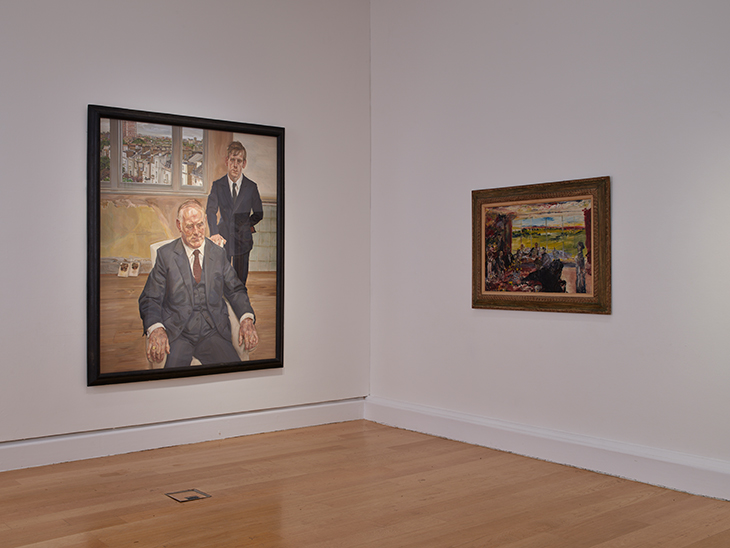
Installation view of ‘Life above Everything: Lucian Freud and Jack B. Yeats’ at the Freud Centre, IMMA, Dublin. Photo: Ros Kavanagh
In what follows here, the clothed male figure, and the relationship between figure and place are lightly positioned as a recurring theme. We are invited to ponder Freud’s handling of the suited men, and the city seen through a window, in his Two Irishmen in W11 (1984–85). The detailed, slow attention paid to flesh and the fabric in which it is entombed, all by now treated in broad brushstrokes of thick paint, bring together the human and the material; more than just glass seems to stand between these men and the cityscape behind them. In turn, Yeats’s Two Travellers (1942) and Two Men Walking (1946) offer figures who in their very inscrutable, incorporeal darkness seem present, distinct spirits moving through a no less visionary landscape, fleetingly yet substantially evoked in a profusion of paint. The success of the exhibition’s comparative approach lies in its eye-opening simplicity.
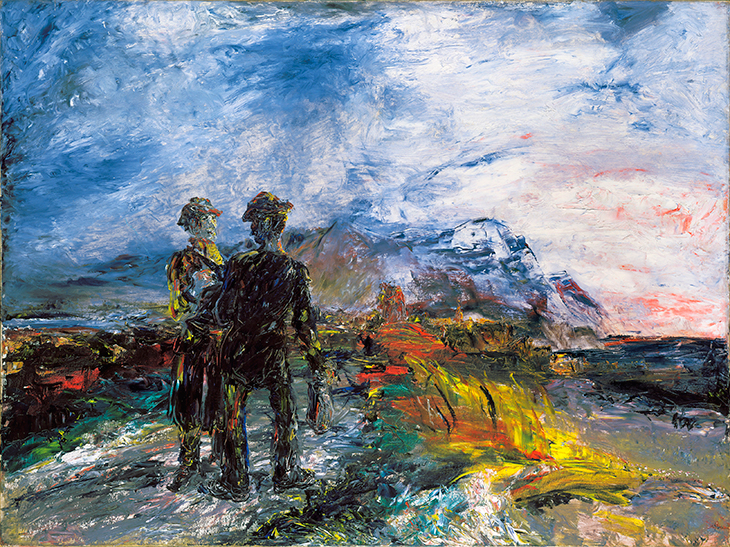
The Two Travellers (1942), Jack B. Yeats. Photo © Tate, London 2019; © Estate of Jack B. Yeats, DACS London/IVARO Dublin, 2019
‘Life Above Everything: Lucian Freud and Jack B. Yeats’ is at the Freud Centre at the Irish Museum of Modern Art, Dublin until 19 January 2020.
Unlimited access from just $16 every 3 months
Subscribe to get unlimited and exclusive access to the top art stories, interviews and exhibition reviews.

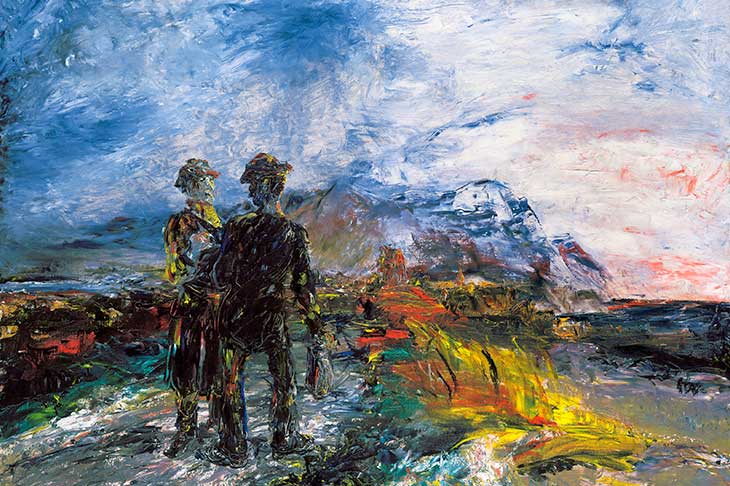
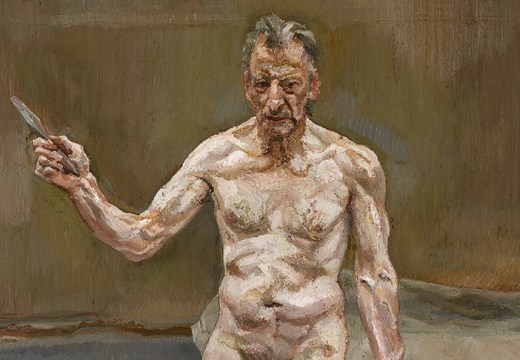
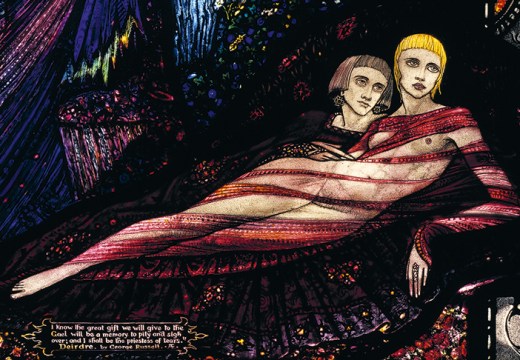
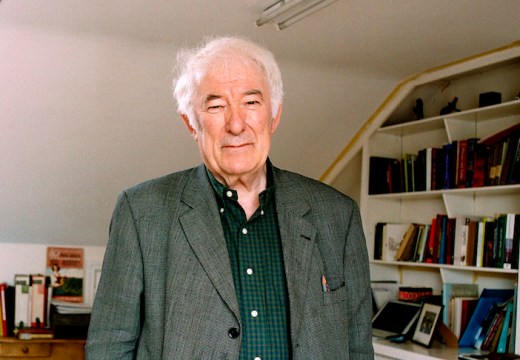









![Masterpiece [Re]discovery 2022. Photo: Ben Fisher Photography, courtesy of Masterpiece London](http://www.apollo-magazine.com/wp-content/uploads/2022/07/MPL2022_4263.jpg)
It’s time for the government of London to return to its rightful home